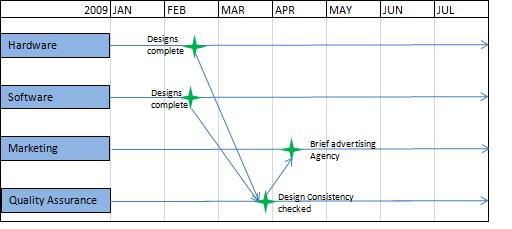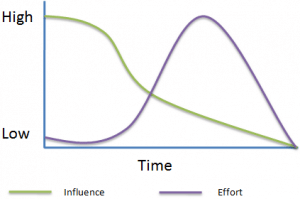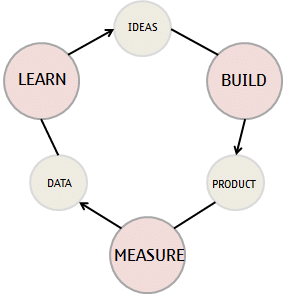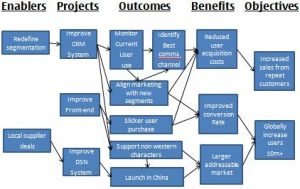All program managers must track the dependencies that exist between the projects which make up their program. The easiest way I’ve found to do this is by using a Dependency Map.
A Dependency Map allows us to visualise the critical cross-project dependencies throughout the duration of the program. The Dependency Map should not be confused with the Program Plan, which shows the milestones of the different projects and the points at which benefits can start to be realised during the program.
A dependency map provides two key benefits to you as a program manager:
- It allows you to ensure the complex network of project interdependencies is coordinated and synchronised.
- It allows you to track that work packages produced by the different project teams are integrated.
A simple dependency map is shown below.
In this example we can see that in order for the advertising agency to be briefed by the Marketing team, they must have the final Hardware and Software designs. As the Hardware and Software teams are different project teams, before the designs are given to marketing they will be checked for consistency by the Quality Assurance team.
During a program, a program manager will spend a large portion of their time tracking and coordinating project interdependencies, and The Dependency Map is the key tool I use for doing this.







